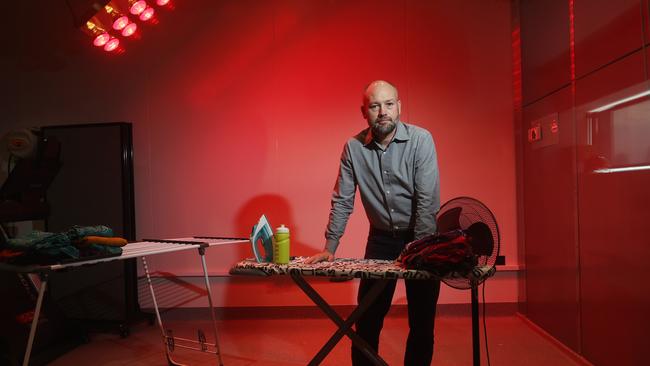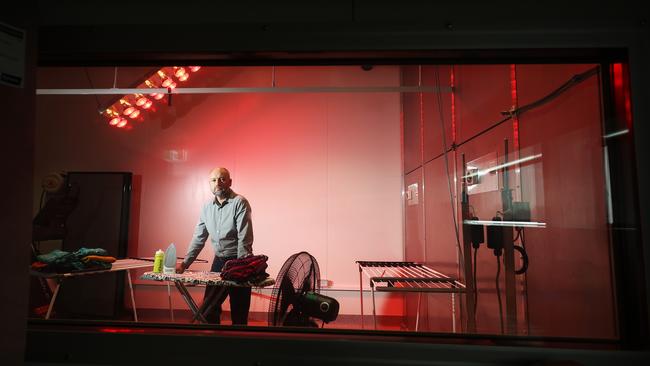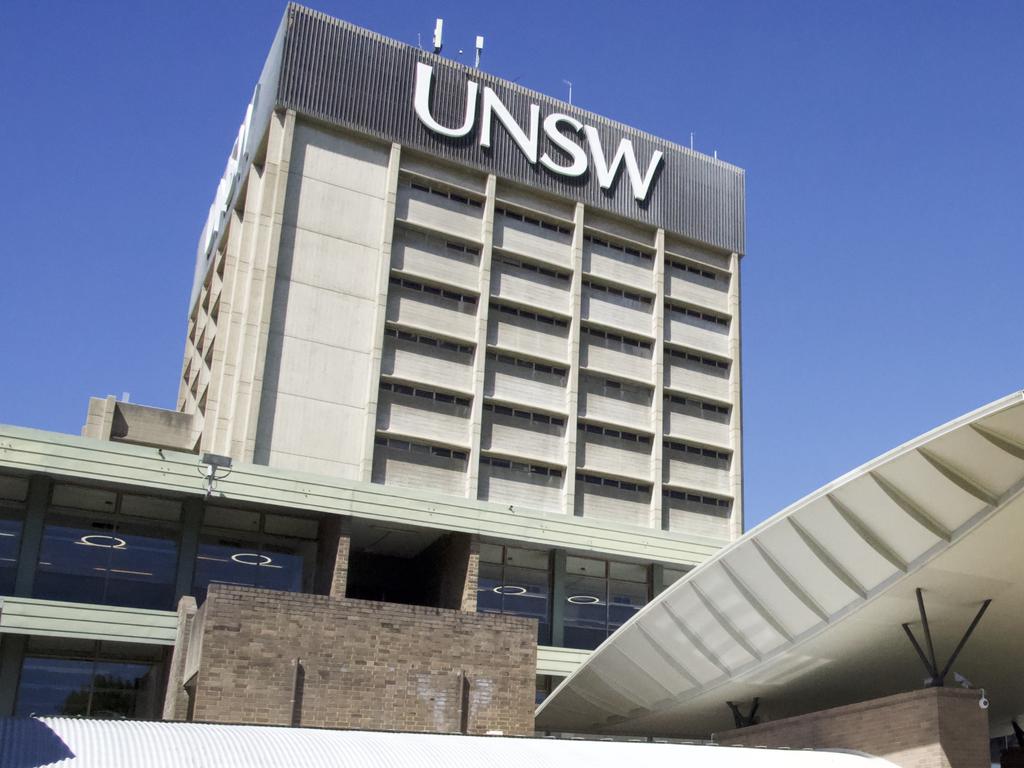Inside the University of Sydney chamber simulating a warmer climate
A little known ‘climate chamber’ at the University of Sydney may prepare the world for hotter days to come – and now it’s taking to the global stage.

Within the white-walled maze of the Susan Wakil Health Building at the University of Sydney, an unassuming little room may be helping predict the future.
Director of the Heat and Health Research Centre, Professor Ollie Jay, has spent the last two years testing the effects of extreme heat and humidity on the human body inside the Thermal Ergonomics Laboratory, colloquially known as the “climate chamber”.
The chamber, which is no bigger than a living room, can “simulate any condition on Earth” and has been put to work over the last two years recreating heatwaves and imitating the factory conditions experienced by garment workers in Bangladesh.
The aim? To equip the world for hotter days to come.
Now Professor Jay will be taking his groundbreaking unpublished findings to the global stage when he presents at the upcoming World Health Summit Regional Meeting in Melbourne on April 22-24.
“I think the work that we’re doing here at the Heat and Health Research Centre is really trying to focus on solutions,” he said.

“It’s about understanding and accepting that there is already going to be – as a legacy of human activity today – a certain amount of warming in the climate system.
“So we’re going to have to figure out how to adapt to warmer weather over the coming decades … and we want to start giving individuals, employers, and companies’ agency when thinking about what we can do to adapt to this warmer future and still potentially thrive.”
Professor Jay explained how the chamber uses a combination of heaters, chillers, humidifiers and dehumidifiers to create any combination of temperature and humidity on the weather record – including those yet to pass.
“This particular chamber not only enables us to simulate heatwaves of the past, we also work with climate scientists to predict what the heatwaves of the future might look like,” he said.
“What we can then do is actually expose participants to those different versions of the future and demonstrate what kind of impact they will have.”
As well as predicting the future, the climate chamber is helping the workforce adapt to hotter working conditions where according to the Research Centre, a person can take up to 1.5 hours longer to complete a physical task in severe heat.
“The first part of that project was kitting out a ready-made garment factory in Dhaka in Bangladesh with 33 temperature humidity sensors across three floors of a factory,” Professor Jay explained.

“We assessed how hot and humid the conditions people working in these factories were exposed to and we wanted to understand how we can alleviate how hot and uncomfortable workers feel, how dehydrated they become, but also their productivity.”
“Work productivity is a really important component because in many lower middle income countries, workers are paid based on how much output they produce rather than how much time they spend in the workplace, and when you get hot, the body slows down.
The Heat and Health team partnered with Griffith University, the Bangladesh University of Engineering Technology, and received a grant from Wellcome Trust to develop low-cost solutions to keep workers safe and output high.
They found coupling air movement with allowing workers to hydrate regularly worked best in conditions were people are exposed to temperatures as high as 40 degrees with 30 per cent humidity. However, they found that the addition of a reflective insulated white roof could reduce the indoor factory temperature by a further 2.5 degrees.
“It doesn’t sound like very much,” Professor Jay said, “but it’s sufficient to make a bit of a difference (for the workers)” compared to impractical alternatives like cooling vests and airconditioning.
With 240 trials completed in the climate chamber, Professor Jay said the research findings present a “win-win” situation for workers, employers, and the Bangladesh economy.
Professor Jay said working with other countries was key to preparing for a hotter future we will face together.
“This is an example where we are thinking about our wider region and thinking about where a lot of our clothing comes from, and a lot of our clothing is likely manufactured in these factories in Bangladesh.
“A lot of the work that we do focuses on the wellbeing and health of Australians in Australian settings, but also, as leaders in our broader region, I think it’s important for us to be thinking outside of our borders.”





To join the conversation, please log in. Don't have an account? Register
Join the conversation, you are commenting as Logout